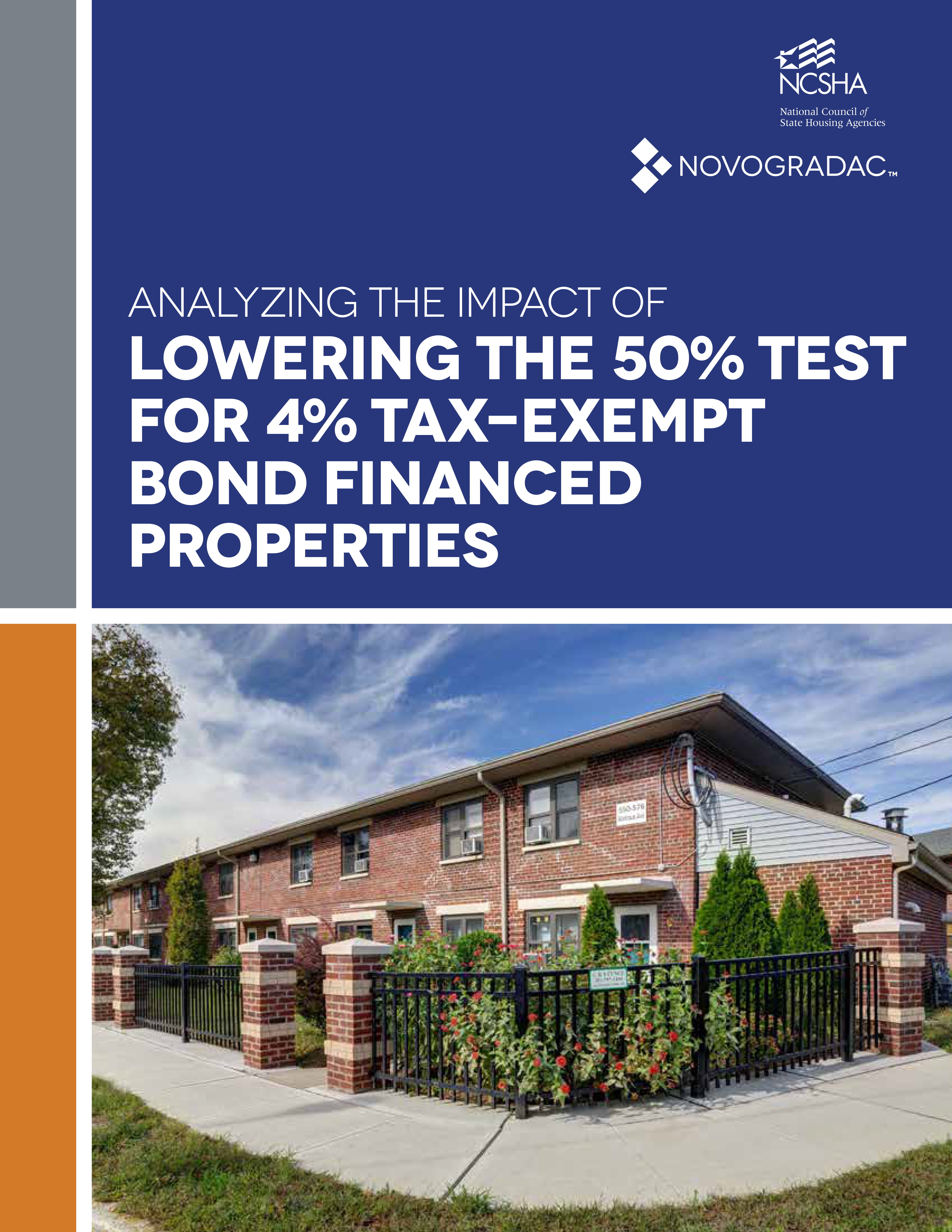NCSHA and Novogradac Release Analysis Showing Effect of Lowering 50 Percent Test for Bond-Financed Housing Credit Developments

This week, NCSHA published a report showing how lowering the “financed-by” threshold — commonly referred to as the 50 percent test — for bond-financed Housing Credit projects would impact available Private Activity Bond cap and could increase multifamily affordable housing production. Under current law, multifamily developments financed with tax-exempt housing bonds are eligible to receive the so-called 4 percent Housing Credit if the bonds finance at least 50 percent of total project costs, including land. The credits for such developments do not decrease the state in question’s Housing Credit volume cap. The report considers the outcomes that lowering the financed-by threshold would have if set at 40 percent, 33 percent, and 25 percent. Novogradac conducted the analysis, which NCSHA commissioned.
The analysis finds that, if Congress were to lower the financed-by threshold to 40 percent, it would free up nearly $37.5 billion in bond cap over the 10-year period from 2021 to 2030, which if used for multifamily housing bonds would result in the production of 355,330 additional units — a 25 percent increase over projected production at a 50 percent financed-by threshold. If lowered to 33 percent, more than $63.7 billion in bond authority would be freed, resulting in as many as 732,195 additional units, a 52 percent increase compared to projected production at a 50 percent financed-by threshold over the same time period. And if the financed-by threshold lowered to 25 percent, it would result in nearly $93.7 billion in freed bond authority, resulting in as many as 1,421,320 additional units, a 100 percent increase over projected production at a 50 percent financed-by threshold over the same time period.
Novogradac’s model assumes developments would be able to replace the tax-exempt debt that is no longer statutorily required with either additional taxable or recycled tax-exempt debt, holding constant the overall net operating income achieved with the 50 percent financed-by threshold. The model also assumes that gap financing sources would be scalable to support the additional production.
Lowering the financed-by threshold is one option for maximizing the amount of Private Activity Bond cap available to states for affordable housing and other purposes, as a growing number of states are facing bond cap constraints, primarily because of increased demand for bond authority for multifamily housing.
However, the need to lower the financed-by threshold has become even more immediate because of the COVID-19 pandemic, as projects in the pipeline face unexpected costs due to social distancing and construction delays. These unanticipated cost increases will result in some properties not being able to meet the 50 percent financed-by threshold. Without hitting the threshold, these properties will lose Housing Credits and likely will not be financially viable. Thus, NCSHA and other Housing Credit stakeholders are advocating now for a lower financed-by threshold in response to the pandemic.
For more information, contact Jennifer Schwartz.

